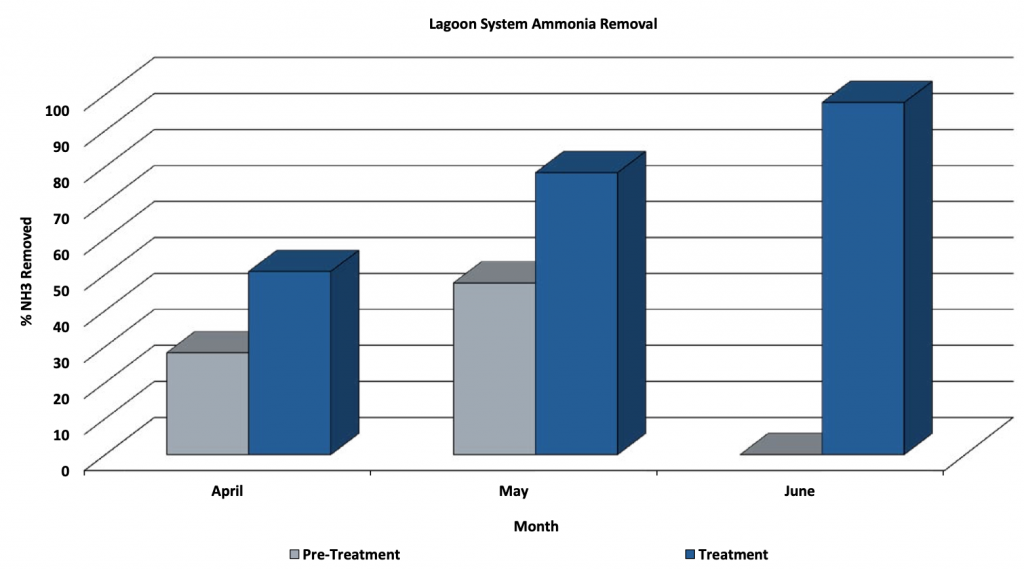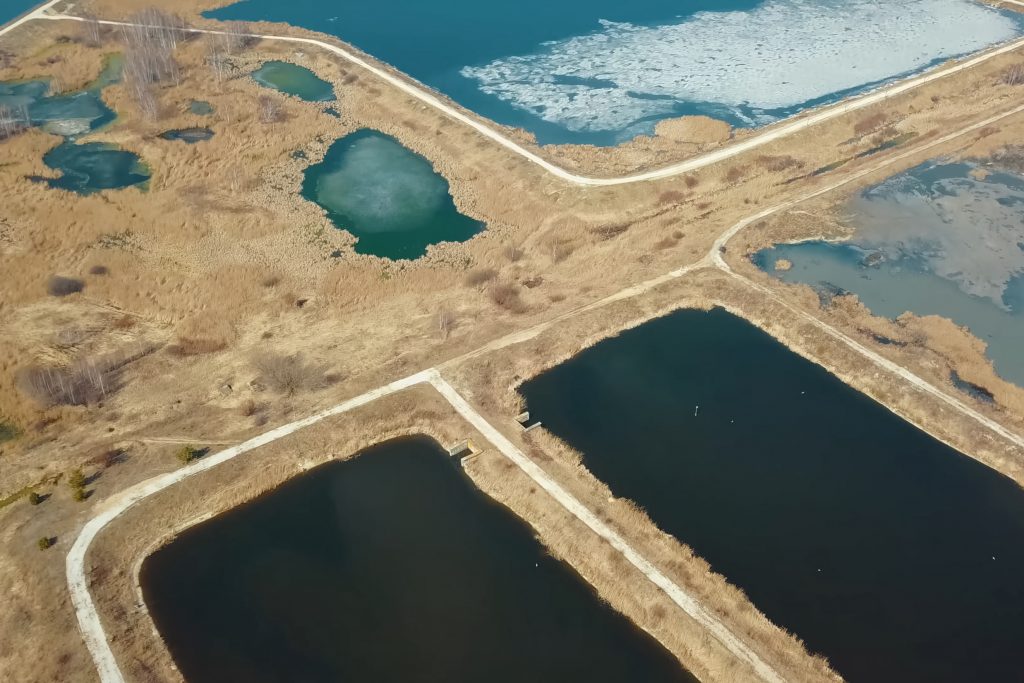Lagoon WWTP 0.2MGD
Municipal Lagoon systems are often challenged with facilitating nitrification. Nitrifying bacteria are responsible for removing ammonia from wastewater. These organisms are generally in low abundance in lagoon processes for a few reasons; [1] nitrification is an energetically taxing process and [2] nitrification is easily disrupted by inconsistencies in physical wastewater conditions.
For example, moderate alkalinity and temperature changes can impair ammonia oxidation. There is limited control over the physical conditions in lagoon systems. Because of these margins, nitrification is often the rate-limiting reaction in the treatment process.1
Lagoon systems can be augmented with concentrated cultures of nitrifying bacteria to promote nitrification. The following case study accounts the bioaugmentation of BioLynceus® ProBiotic Scrubber® II (PBII) in a wastewater lagoon network struggling to remove ammonia concentrations.
A 0.2 MGD covered lagoon system in Colorado was having issues maintaining a nitrifying biomass. At times, the process basins had inconsistent temperature and alkalinity. During the winter months the wastewater would become very cold halting nitrification. Consistent alkalinity was not well maintained in the system. These factors, among others not identified, limited nitrification in the lagoons.
The city wastewater management wanted to improve nitrification in their process. They had effluent ammonia limits to meet and would need to promote ammonia removal. In need of bioaugmentation, the city contacted BioLynceus®.
PBII, a highly diversified consortium of living bacteria abundant in nitrifiers, was augmented in the lagoon to stimulate the nitrification process. Product was applied over three months, April, May and June. Wastewater temperatures were above 3 degrees Celsius.

Figure 1. Pre-treatment (greys) and treatment (blues) influent (Inf. PT & Inf. T) and effluent (Eff. PT & Eff. T) ammonia concentrations displayed as measured in the lagoon system over two consecutive years in April, May, and June.

Figure 2. Monthly percent ammonia removed in the lagoon system was determined for April, May, and June of the year prior to treatment (grey) and during treatment (blue). Percent ammonia removed was calculated by comparing influent and effluent ammonia concentrations.
Compared to the same time period the previous year, influent ammonia concentrations increased each month, and effluent concentrations decreased (Figure 1). Effluent ammonia concentrations were approximately 96% lower with treatment the following year April to June. Furthermore, percent ammonia removed in the process was increased by 23% in April, 31% in May, and 98% in June (Figure 2). Augmenting the lagoon system with PBII supported efficient nitrification and better effluent quality.
BioLynceus® ProBiotic Scrubber® II helps promote nitrification in wastewater lagoon systems.
1 Gerardi, M. (2016). Wastewater Bioaugmentation and Biostimulation. Lancaster, Pennsylvania: DEStech Publications, Inc. Pp. 64. https://www.amazon.com/Wastewater-Bioaugmentation-Biostimulation-Michael-Gerardi/dp/1932078789



